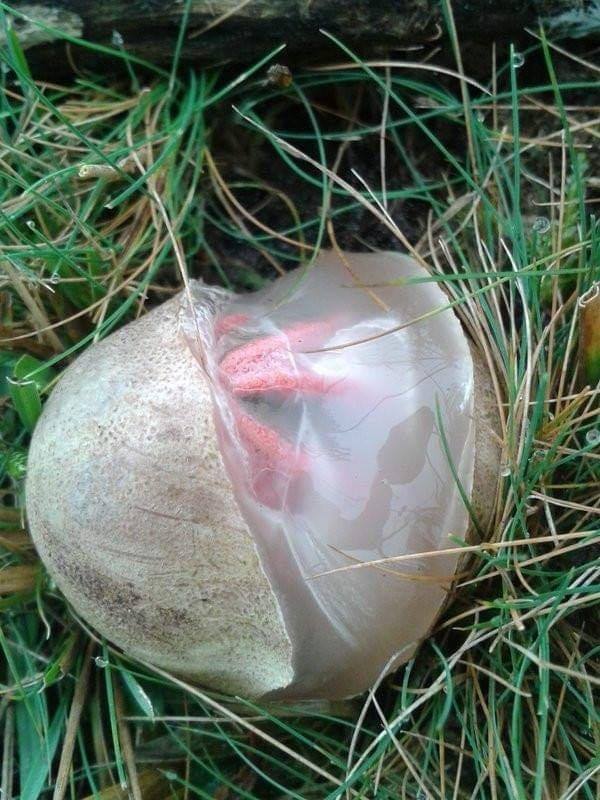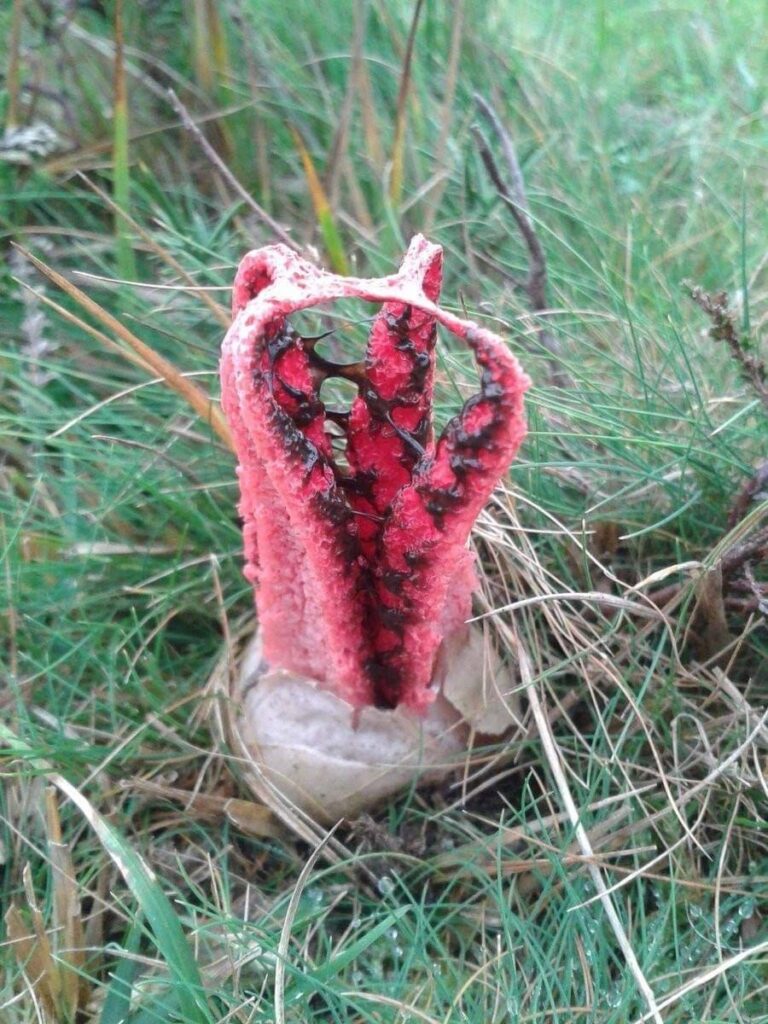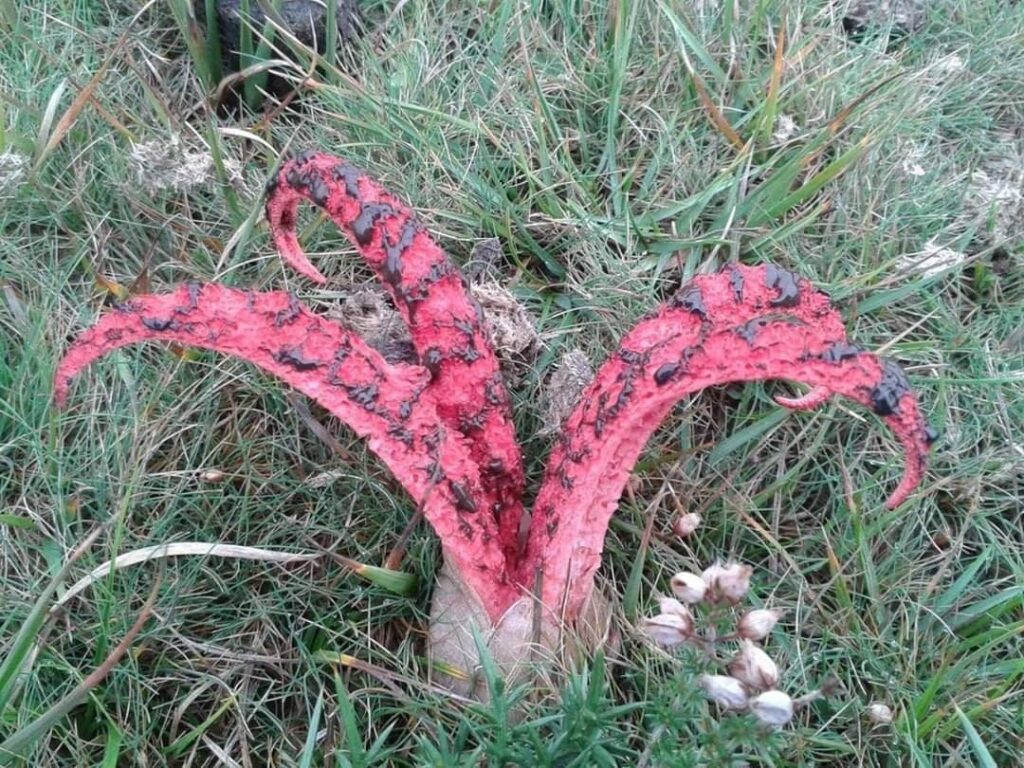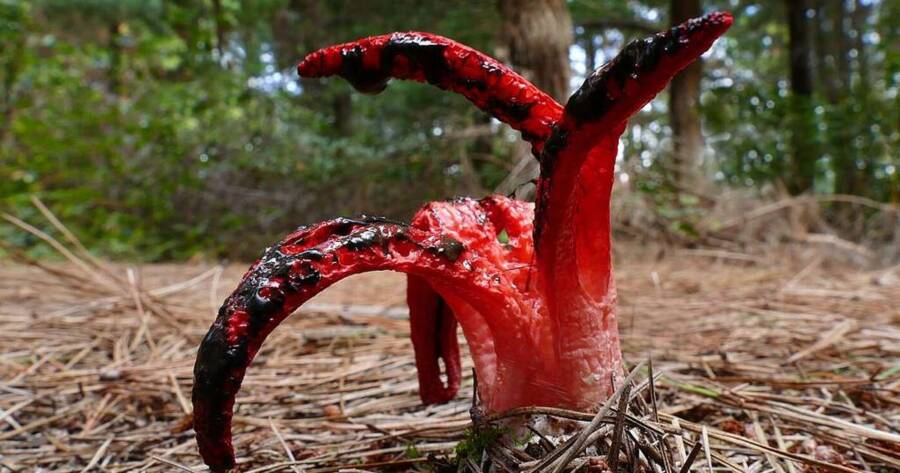
As autumn arrives, the emergence of fungi from tree stumps and woodland floors brings about a spectacle of colors and shapes. One species of fungus that stands out is the devil’s fingers fungus, also known as Clathrus archeri, the octopus stinkhorn, or the Squidward mushroom.

Found between July and October in just a few southern localities in the UK, this spectacular species of fungus favors moist, shaded areas of wood chips, leaf litter, and rough grassland. It is a member of the stinkhorn family but looks nothing like our native stinkhorns when mature.
Devil’s fingers can reach up to 15cm tall when its red-clasped branches first emerge, before they open and arch back to the ground. The inside surface of each of these 4-8 branches is lacy and coated in a dark, sticky goo, which looks rather like clotting blood. This substance is called gleba, and it contains the spores for reproduction.

Most fungi rely on wind or rain splash for dispersing spores, but stinkhorns have developed an animal dispersal system whereby the gleba emits a pungent, rotting odor that attracts insects such as bluebottle flies. The spores are carried away on their legs to colonize new sites.
This fungus does not aim to endear, so it won’t surprise you to learn that it emerges from the soil in a sinister fashion. When ready to “fruit,” the fungus network stretches up to the soil surface and develops into a translucent, gelatinous, egg-shaped structure with the fingers forming inside. When ready to release the spores, the fingers “hatch” slowly out of the egg in a bunch before unfurling back on themselves into the octopus-like form.

The immature egg stage of the fungus is technically edible, though a mycologist who tried it described its flavor and texture as disagreeable. The tentacles are not recommended for consumption.
Devil’s fingers is alien in more than one sense of the word – in description, but also in distribution. It does not belong in the UK, having spread to many other countries in the world from its native Australia and New Zealand through contaminated nursery stock and in plant products.

It is thought to have arrived in Europe with war supplies such as wood and wool in the early 1900s and can be reliably found in certain hotspots in the New Forest in Hampshire, where military bases were established in the 1940s.

All in all, this species is a fascinating and otherworldly addition to our native fungi. If your usual haunted castle tour or fright night is canceled this year, why not take a walk through the New Forest this Halloween and witness the eerie beauty of the devil’s fingers fungus?

Leave a Reply